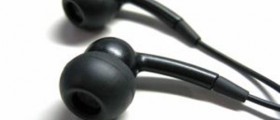
Hearing is one of the traditional five senses usually described as the ability to perceive sound by detecting vibrations via an organ such as the ear. On the other hand, hearing impairment or deafness refers to conditions in which individuals are fully or partially unable to detect or perceive at least some frequencies of sound, otherwise perceivable by humans. In humans, hearing is performed by detection of vibrations by the ear, and translated into nerve impulses that are perceived by the brain. Hearing range is the range of frequencies that can be heard by an animal or a human. In humans the audible range of frequencies is usually said to be 20 Hz (cycles per second) to 20 kHz (20,000 Hz). However, different individuals (especially at different ages) may hear frequencies of a different range. Human hearing consists of different structures and organs with various purposes and functions. Human ear consists of three different regions: outer ear, middle ear and inner ear.
The outer ear
The outer ear is the most external portion of the ear. It includes pinna, the ear canal and the most superficial layer of the eardrum, also known as the tympanic membrane. Pinna helps to collect the sound vibrations near the opening of the ear and directs sound waves into the external ear canal. Ear canal is approximately 1 inch long passageway connected to the tympanic membrane. Sound waves are funneled down this channel and amplified. Sound channels from the ear canal hit the tympanic membrane and provoke vibrations. The function of this thin fibrous membrane of approximately 1/3 inch in diameter is to reproduce frequency in a form of a sound wave.
The middle ear
The middle ear includes the three ear bones or ossicles: the malleus (or hammer), incus (or anvil) and stapes (or stirrup). The hammer is a small bone and a mechanical link between the tympanic membrane and the inner ear. The three ear bones deliver the vibrations to the ear fluids and amplify airborne sound by approximately 30dB.
The inner ear
The inner ear includes both the organ of hearing, known as cochlea and the sense organ that is adjusted to the effects of both gravity and motion. Cochlea is a bony, spiral shaped cavity coiled 2.5 times in a form of a snail shell. Cochlea is filled with fluid and divided into three sections. The main function of cochlea is to convert stimulus from the outside environment into the nerve impulses. The hearing is possible because the eighth cranial nerve comes from the brain stem to the inner ear. The sound first stikes the ear drum and the movement is transferred to the footplate of the stappes. Stappes presses it into one of its fluid-filled ducts through the oval window of cochlea. The fluid inside the duct moves and flows against the receptor cells of the Organ of Corti, the organ in the inner ear that contains auditory sensory cells, or "hair cells." Hair cells stimulate the spiral ganglion and the information is sent from the auditory portion of the eighth cranial nerve to the brain.

















Your thoughts on this
Loading...